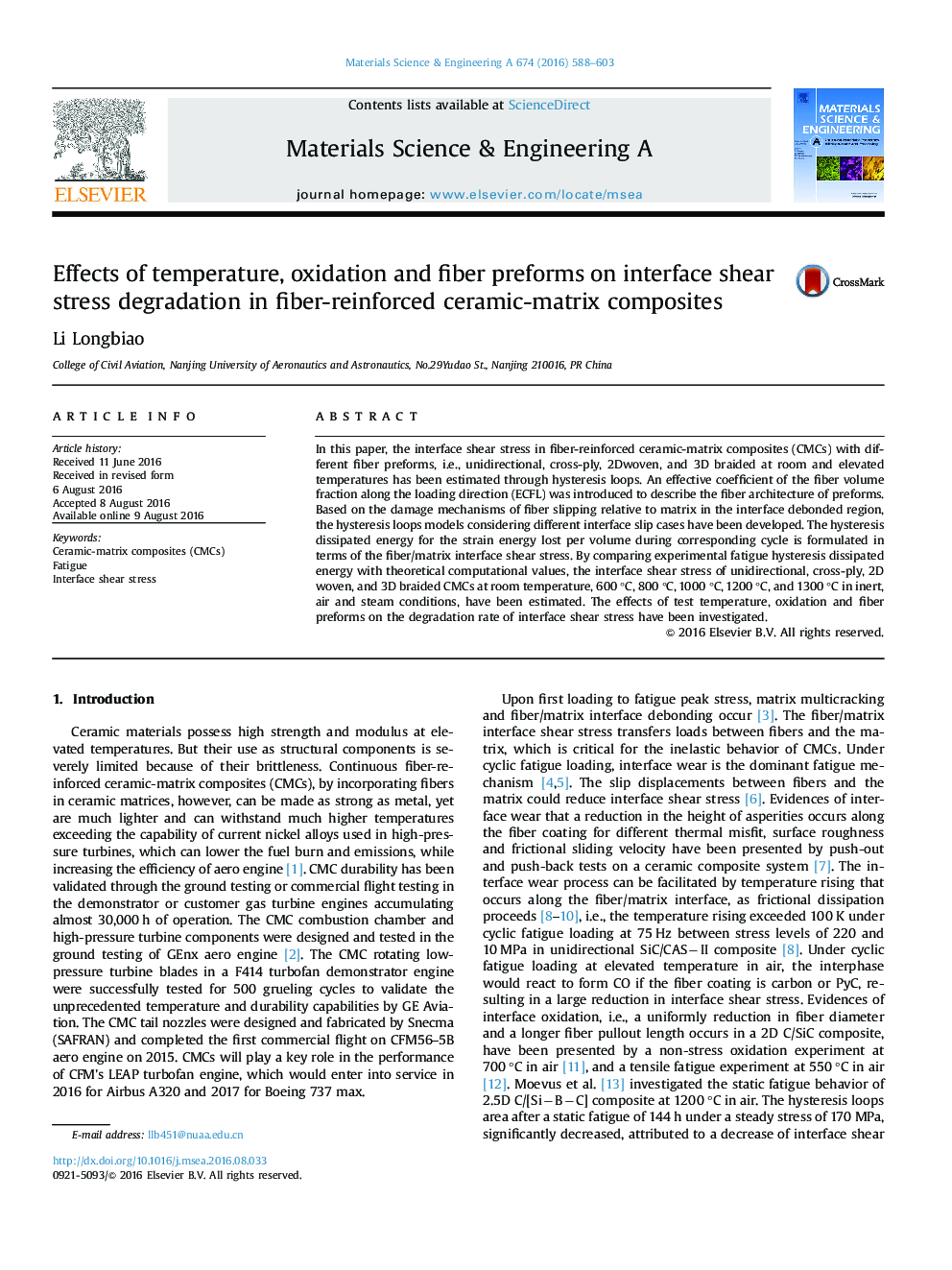| Article ID | Journal | Published Year | Pages | File Type |
|---|---|---|---|---|
| 7975052 | Materials Science and Engineering: A | 2016 | 16 Pages |
Abstract
In this paper, the interface shear stress in fiber-reinforced ceramic-matrix composites (CMCs) with different fiber preforms, i.e., unidirectional, cross-ply, 2Dwoven, and 3D braided at room and elevated temperatures has been estimated through hysteresis loops. An effective coefficient of the fiber volume fraction along the loading direction (ECFL) was introduced to describe the fiber architecture of preforms. Based on the damage mechanisms of fiber slipping relative to matrix in the interface debonded region, the hysteresis loops models considering different interface slip cases have been developed. The hysteresis dissipated energy for the strain energy lost per volume during corresponding cycle is formulated in terms of the fiber/matrix interface shear stress. By comparing experimental fatigue hysteresis dissipated energy with theoretical computational values, the interface shear stress of unidirectional, cross-ply, 2D woven, and 3D braided CMCs at room temperature, 600 °C, 800 °C, 1000 °C, 1200 °C, and 1300 °C in inert, air and steam conditions, have been estimated. The effects of test temperature, oxidation and fiber preforms on the degradation rate of interface shear stress have been investigated.
Related Topics
Physical Sciences and Engineering
Materials Science
Materials Science (General)
Authors
Li Longbiao,
